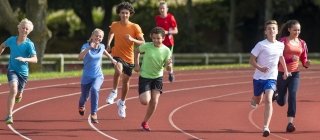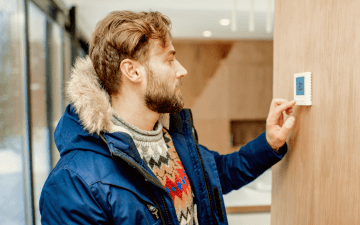Health and Safety Items for Your Back-to-School Checklist

Include these items on your Fall checklist to help your children be ready for the classroom and beyond.
As summer winds down, parents’ thoughts naturally turn to getting their children ready to return to school. Along with shopping for school supplies, there are several health-related items that should be on your back-to-school checklist. We want your kids to get off to a good start in the new school year, so here are our recommendations for what you can do to keep them healthy and safe at school.
- Get a check-up. If your kids haven’t seen their pediatrician or family physician lately, back to school is a great time for a check-up. During the visit, be sure to discuss concerns like allergies, and any changes in your child’s health. If your child is participating in a sport or activity during the school year, tell the doctor about it so that your child can be screened for any conditions that might affect their participation. A physical exam may be required before playing some sports.
- Update vaccinations. Find out from your school what immunizations are required to attend, and then make sure each child’s vaccinations are current. If an immunization is needed, it can be given during the check-up.
- Provide medical information. Make sure your school has updated information about any medications your child takes, along with a list of their medical conditions, such as diabetes or asthma. If your child has any allergies, it is important that the school knows about them. Include in the information the date of the child’s last eye exam. The school should also have contact information for your child’s primary care doctor.
- Develop an emergency action plan. Review with your children how they should contact you if there’s an emergency. Include who they should call if they can’t reach you. Discuss with your children the school’s emergency procedures and make sure they know what to do. It’s a good idea to choose in advance a meeting place near the school where you can pick up your kids in an emergency.
- Talk about safety rules. Have a conversation with your children about safety rules, including not talking to strangers and never getting into a stranger’s vehicle. If your child is going to be home after school without an adult present, set some safety ground rules. For example, what they should do if someone comes to the door. Include in those ground rules what the child is allowed to do for making snacks and using kitchen appliances.
- Prevent spreading illnesses. Returning to school means that kids will again be in close contact with each other and can spread illnesses. Remind your children how they should prevent germs from spreading, including frequent handwashing, coughing or sneezing into their elbow, and keeping their hands away from their nose and mouth.
- Keep backpacks light. Avoid overloading your child’s backpack to prevent straining their neck and back. A rule of thumb is the backpack should not weigh more than 10-20 percent of the child’s body weight. Make sure the shoulder straps are adjusted so that the pack fits snugly against your child’s back, without pulling on the shoulders, and that the weight is distributed evenly.
- Rehearse traveling to and from school. Go over with your children how they should get to school and return home. This is especially important if your child is attending a new school. For example, if they will be riding the school bus, teach them about the importance of getting on and off the bus safely. If they are walking to school, talk about the need to use the same route each day and practice it, including how to cross the road safely. If your child is riding their bike to school, they should have a bike helmet that fits correctly.
- Get the right protective gear. If your child will be participating in a team sport or after-school activity, be sure they have the correct protective equipment. This may include helmets, shin guards, eye protection, and mouth guards. Check with the coach or athletic trainer to find out what equipment is required or recommended. Equipment should fit properly and be in good condition. Also, make sure your child has a water bottle for hydration.
- Set a schedule. After a summer off, your children may have gotten out of the habit of being ready on time. Create a schedule with them, including when they should be out of bed, what they need to do to get ready for school, when they should leave the house, and when they need to be at the school. Likewise, talk about where they are allowed to go after school and what they can do, including how much screen time is permitted. It’s tempting to fill the schedule with activities, but too much can be stressful for kids, so let them choose which activities they want to participate in. If an activity is not enjoyable or too demanding for them, let your child know that it’s OK to stop or change activities.
Including these items on your back-to-school checklist, and taking action to complete them, means your children will be ready for the classroom and beyond. We hope that they have a healthy and fun school year!



